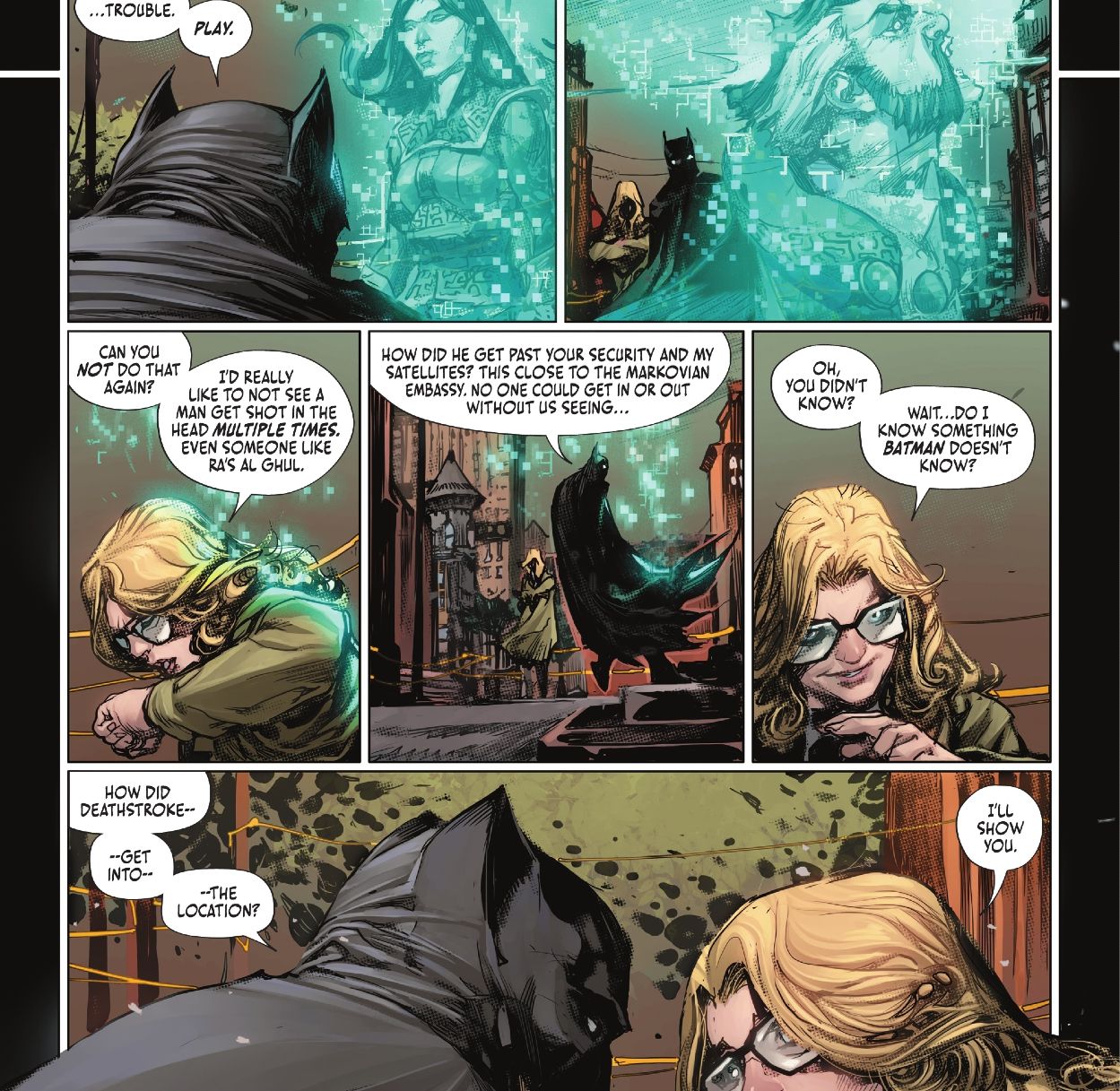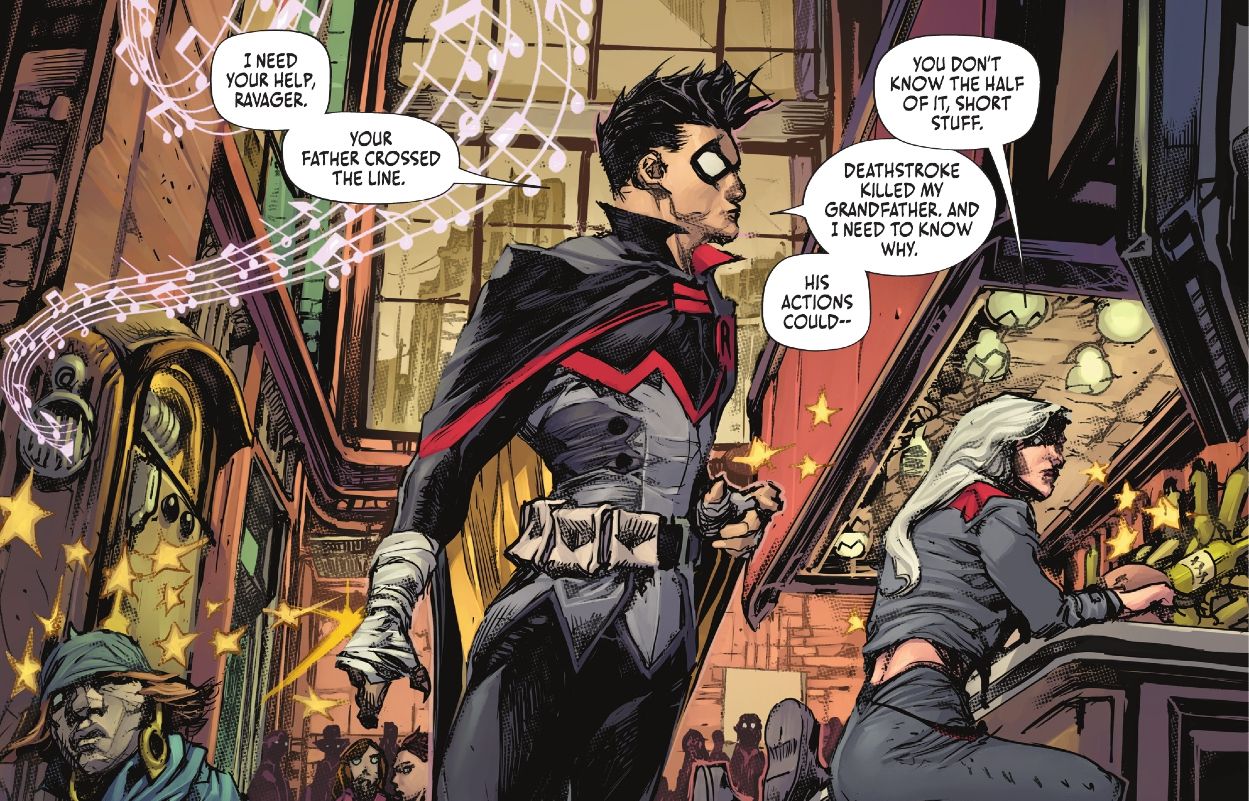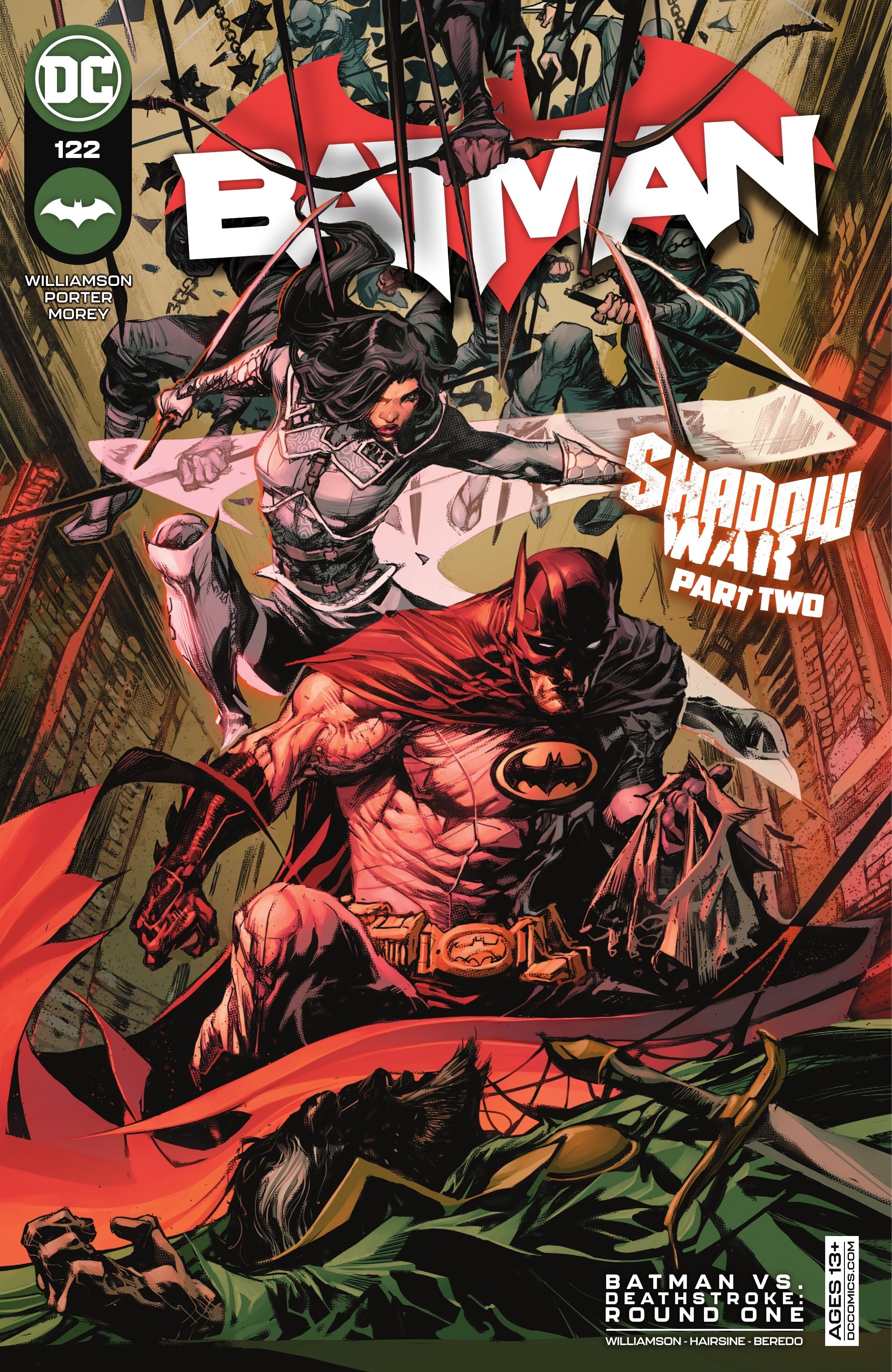DC's Batman #122
- Artist
- Trevor Hairsine, Howard Porter
- Colorist
- Tomeu Morey, Rain Beredo
- Cover Artist
- Tomeu Morey, Howard Porter
- Letterer
- Willie Schubert, Clayton Cowles
- Price
- 4.99
- Publisher
- DC Comics
- Release Date
- 2022-04-05
- Writer
- Joshua Williamson
Ra's al Ghul has gone by a hundred names, but it is the moniker of the Demon's Head that strikes fear in the hearts of men. After years of fighting the Detective and going toe-to-toe with formidable opponents, the ecoterrorist wants to try a different approach. He gives himself up, along with the secrets of the Lazarus pit, to the authorities. When someone dressed as Deathstroke kills Ra's Al Ghul in front of the media, the world is left stunned by the events. Naturally, Talia is out for blood, sending her menagerie of assassins to Deathstroke Inc. as Batman investigates the murder privately. Written by Joshua Williamson with artwork from Howard Porter, Trevor Hairsine, Tomeu Morey, and Rain Beredo and lettering by Clayton Cowles and Willie Schubert, Batman #122 reopens old wounds between warring legacies.
Batman #122 opens on the stairways of the Markovian Embassy in Washington D.C., where the Demon's Head has met his sudden end in the most anticlimactic fashion. Batman is at the crime scene with Director of the D.E.O., Cameron Chase, scrutinizing every minute detail as time is of the essence until the feud between Deathstroke and Talia spills onto the streets. Talia has already made the first move, sending a contingent of ninja assassins to kill Deathstroke in his own Hightower. As Damian and Ravager set out to settle their own scores and vendettas, Batman sneaks into the Demon Palace in Nepal to get some answers. Meanwhile, the backup feature is set in the past as Batman and Deathstroke duke it on the rooftops of Gotham, but something is amiss with the Terminator.

Batman #122 sets the stage for an all-out, action-packed event as the three-month-long crossover gets underway. From the get-go, it is evident that the Shadow War arc looks to shake up the status quo enough to make new changes in the DC universe. This issue acts as a stepping stone for such ideas to be realized, introducing the players on the board and acquainting readers with the current world situation. Writer Joshua Williamson floods the book with an abundance of action that meanders past moments of musing, creating a three-fold narrative. The story remains stagnant, despite the omens of impending doom, and unmoved by the intense fight sequences. With Batman caught in the middle of the conflict, the subplot of the murder mystery gives a suspenseful angle to the book. The final few pages of the issue depict the first meeting between Deathstroke and Batman, also written by Williamson, which is as explosive as the main story.
The artwork of Howard Porter captures the chaotic energy of Williamson's writing with his wild use of bold contour lines and rugged pencil work. Porter's art style looks lively and a bit caricaturish at times, which only amplifies the hectic pacing of the book. Tomeu Morey uses bright colors against a dark background to create lighting effects that bring depth to the artwork. However, certain scenes, especially the scenes of brawls, look muddled as the details in the foreground blend with the background. Meanwhile, Trevor Hairsine and Rain Beredo's artwork in the backup provides a throwback to the old designs of Batman, Robin, and Deathstroke and gives a closer look into the close-quarter combat.

Batman #122 becomes a victim of multi-titled crossover events as the story focuses more on the animosity between the warring factions than the titular hero. Despite that, Williamson portrays a good grasp of the character of Batman, whose detective skills and sensitive nature behind the cowl come to the foreground in the most intimate ways. While the main title has a dynamic flair, the ending of the backup story seems more intriguing. Overall, Batman #122 ends with a reignition of an old romance while ominous calm bellies the oncoming storm.



